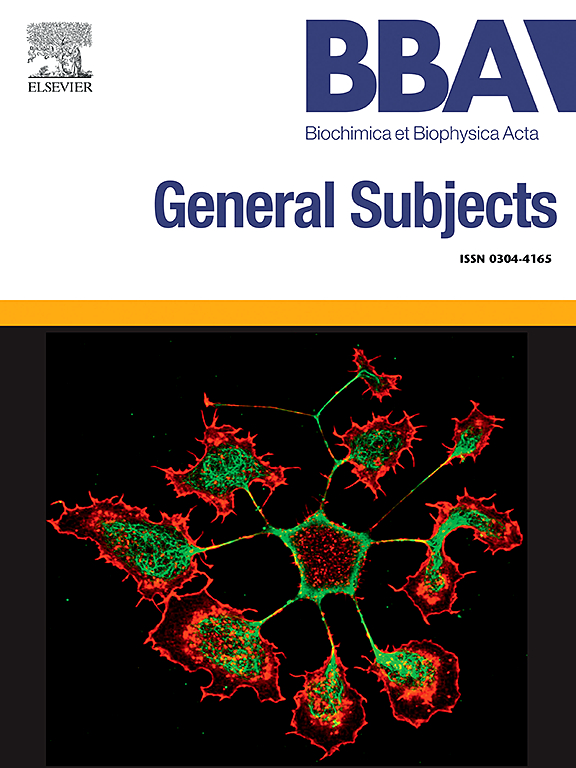Computational modelling of olfactory receptors
IF 2.2
3区 生物学
Q3 BIOCHEMISTRY & MOLECULAR BIOLOGY
Biochimica et biophysica acta. General subjects
Pub Date : 2025-05-27
DOI:10.1016/j.bbagen.2025.130825
引用次数: 0
Abstract
Olfactory receptors (ORs), the largest subfamily of G protein-coupled receptors, are essential for detecting and interpreting environmental odorants in animals. Understanding their function is crucial for deciphering olfactory perception and exploring emerging roles in non-olfactory systems. With the recent surge in available sequence data and AI-based structural predictions, computational modelling has become indispensable for investigating OR structure, ligand binding, and activation mechanisms. This review provides a comprehensive overview of computational approaches used in OR research, including homology modelling, molecular docking, molecular dynamics simulations, free energy calculations, pharmacophore modelling, virtual screening, and machine learning-based predictions. Both ligand-based and structure-based pharmacophore modelling are discussed in detail, highlighting their respective applications, strengths, and limitations. While structure-based approaches have gained prominence due to advances in receptor structure prediction tools like AlphaFold, ligand-based pharmacophore modelling remains valuable in scenarios where structural data are limited or uncertain. Case studies illustrate how these techniques have been applied to identify novel OR–ligand interactions, explore receptor dynamics, and support drug discovery. Collectively, these computational strategies offer powerful tools for decoding OR function, guiding experimental validation, and expanding our understanding of olfactory signalling in health and disease.
嗅觉受体的计算模型
嗅觉受体(ORs)是最大的G蛋白偶联受体亚家族,对动物检测和解释环境气味至关重要。了解它们的功能对于破译嗅觉感知和探索非嗅觉系统中的新角色至关重要。随着最近可用的序列数据和基于人工智能的结构预测的激增,计算建模已经成为研究OR结构、配体结合和激活机制不可或缺的工具。本文综述了用于OR研究的计算方法,包括同源建模、分子对接、分子动力学模拟、自由能计算、药效团建模、虚拟筛选和基于机器学习的预测。本文详细讨论了基于配体和基于结构的药效团建模,重点介绍了它们各自的应用、优势和局限性。虽然基于结构的方法由于AlphaFold等受体结构预测工具的进步而获得突出地位,但基于配体的药效团建模在结构数据有限或不确定的情况下仍然有价值。案例研究说明了这些技术如何应用于识别新的or配体相互作用、探索受体动力学和支持药物发现。总的来说,这些计算策略为解码OR功能提供了强大的工具,指导实验验证,并扩展了我们对健康和疾病嗅觉信号的理解。
本文章由计算机程序翻译,如有差异,请以英文原文为准。
求助全文
约1分钟内获得全文
求助全文
来源期刊

Biochimica et biophysica acta. General subjects
生物-生化与分子生物学
CiteScore
6.40
自引率
0.00%
发文量
139
审稿时长
30 days
期刊介绍:
BBA General Subjects accepts for submission either original, hypothesis-driven studies or reviews covering subjects in biochemistry and biophysics that are considered to have general interest for a wide audience. Manuscripts with interdisciplinary approaches are especially encouraged.
 求助内容:
求助内容: 应助结果提醒方式:
应助结果提醒方式:


